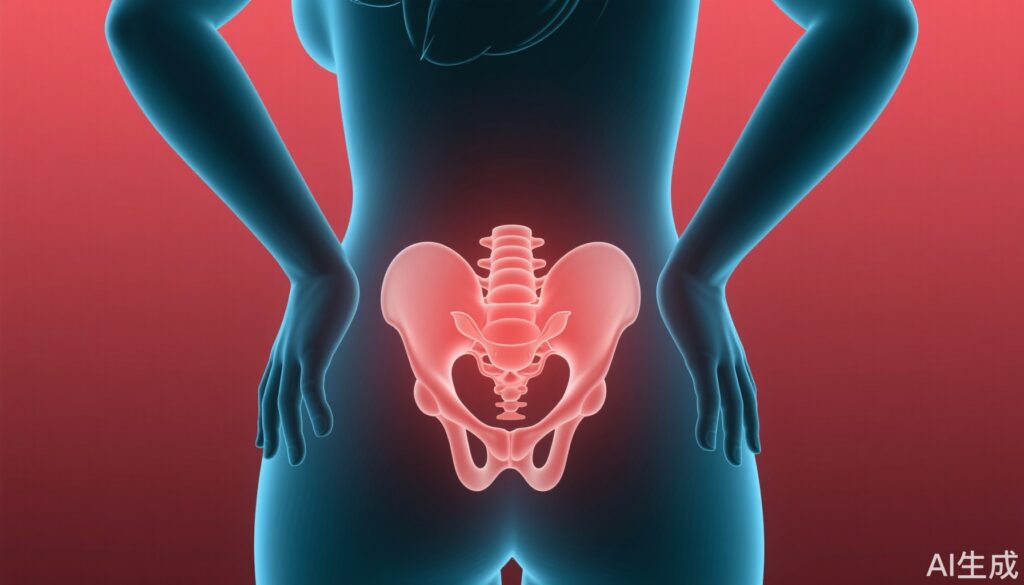Introduction
Lower back pain is a common complaint among women and can arise from numerous causes. While many associate it with muscle strain or fatigue, it is important to recognize that gynecological conditions can also contribute significantly to this symptom. This article explores the potential gynecological causes of lower back pain in women, aiming to provide a comprehensive understanding for better awareness and management.
Common Gynecological Causes of Lower Back Pain
While muscle strain is a frequent cause of lower back pain, several gynecological diseases can also lead to this discomfort. Below are some of the most common gynecological conditions linked to lower back pain in women.
1. Pelvic Inflammatory Disease (PID)
Pelvic inflammatory disease involves inflammation of the pelvic organs and tissues, including chronic adnexitis and pelvic peritonitis. When these tissues become inflamed, the irritation can cause pain in the lower back. Additionally, cervical inflammation may trigger back pain accompanied by symptoms such as increased vaginal discharge, localized itching, and a burning sensation.
2. Uterine Position Abnormalities
The uterus is normally positioned tilted forward (anteverted and anteflexed). However, if the uterus is tilted backward (retroverted), this abnormal positioning can place excessive tension on the ligaments supporting the uterus and compress adjacent nerves, causing lower back pain. For example, uterine prolapse, where the uterus descends through the vagina due to weakened pelvic support and increased abdominal pressure, often results in a sensation of heaviness and aching pain in the lower back caused by ligament strain.
3. Pelvic Tumors
Tumors within the pelvic cavity, such as uterine fibroids, cervical cancer, endometrial cancer, or ovarian tumors, can cause lower back pain either by pressing on nerves or by infiltrating pelvic connective tissues. The severity of pain typically increases as the tumor grows in size.
4. Pregnancy-Related Changes
During pregnancy, the growing fetus increases the mechanical load on the lower back. Ligaments gradually loosen to accommodate the expanding uterus, and the enlarged uterine cavity may compress pelvic nerves and blood vessels, leading to lower back pain. This is a common and expected symptom but should be monitored to rule out complications.
5. Childbearing Factors
Women who have had multiple pregnancies, frequent induced abortions, or unregulated, frequent sexual activity may experience depletion of kidney energy according to traditional medicine principles, potentially leading to lower back pain. This concept highlights the importance of reproductive health and adequate recovery between pregnancies.
6. Postpartum Fatigue
Excessive bleeding, early or strenuous physical activity, and exposure to cold during the postpartum period can contribute to lower back pain due to physical strain and weakened body condition.
7. Menstrual and Postpartum Exposure to Cold
Women suffering from rheumatism or rheumatoid arthritis may experience exacerbated lower back pain during menstruation, childbirth, or postpartum if exposed to wind, dampness, or cold. This can lead to bone spurs on the spine, worsening back pain.
8. Urinary Tract Infections (UTIs)
Due to anatomical factors such as a short and straight urethra located near the anus, women are more susceptible to urinary tract infections, often caused by bacteria like Escherichia coli. Poor hygiene increases the risk of infection. UTIs, particularly acute or chronic pyelonephritis, often manifest with lower back pain characterized by a dull ache or severe pain radiating from the kidneys down through the ureters to the perineal area. Besides infections, urinary stones and tuberculosis can also cause back pain.
Additional Considerations and Management
It’s crucial for women experiencing persistent or severe lower back pain to seek medical evaluation to identify or rule out gynecological causes. Diagnostic tools may include pelvic ultrasound, MRI, or laboratory tests based on the suspected underlying condition.
Treatment varies depending on the diagnosis and may range from antibiotics for infections, hormonal therapy or surgery for tumors and uterine abnormalities, to physical therapy and pain management for musculoskeletal issues. Pregnant women should consult obstetricians for appropriate care to alleviate symptoms safely.
Conclusion
Lower back pain in women is multifactorial and may be related to gynecological diseases among other causes. Recognizing the possible gynecological origins of back pain is essential for timely diagnosis and effective treatment. Women should maintain regular gynecological check-ups and seek professional advice if experiencing persistent lower back discomfort alongside other symptoms such as abnormal vaginal discharge or menstrual irregularities.



